
On 10 Feb 1871, Ira Remsen was born. At the end of his term as President of the American Association for the Advancement of Science, in 1903, the address he gave their meeting was titled Scientific Investigation And Progress. Looking at it now is like opening a time capsule, as he gave a surveyed the role of science in that era. As you read it, you'll find your eyebrows getting raised a time or two, or more!
Albeit a century ago, he referred to the world food production problem and cautioned about a possible future without sufficient fertilizers. He also asked what energy source would replace coal when supplies were exhausted. He explained why it was thought there would be a practically unlimited supply of petroleum. Well, he was wrong about that, but more on the mark about the future of hydroelectricity. Read about these topics, and a lot more in this article.

On 10 Feb 1902, Walter Brattain was born, one of the Nobel prize-winning scientists who originated the transistor. From a crude electronic gadget on the lab bench tested on 16 Dec 1947, there is a direct link through subsequent development to your ability to read this description, on whichever device it may be. Today's book pick is: Crystal Fire: The Invention of the Transistor and the Birth of the Information Age (Sloan Technology Series), by Michael Riordan, Lillian Hoddeson, who tell the story of the brains and events behind this invention. They also make it clear that very little about the transistor's invention was as simple it might seem. In fact, the unique organizational resources of Bell Labs, the furious course of the war effort, and the random twists and turns of historical accident played equally important roles. The saga makes for a gripping read and a crash course in the dizzying complexity of information-age invention.
It is available from Amazon, typically about New from $15.97. Used from $2.56. (As of earlier time of writing - subject to change.)
| no image | It surely can be no offence to state, that the progress of science has led to new views, and that the consequences that can be deduced from the knowledge of a hundred facts may be very different from those deducible from five. It is also possible that the facts first known may be the exceptions to a rule and not the rule itself, and generalisations from these first-known facts, though useful at the time, may be highly mischievous, and impede the progress of the science if retained when it has made some advance. |
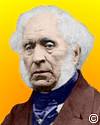 | Truths physical have an origin as divine as truths religious. |
 | While reading in a textbook of chemistry, … I came across the statement, “nitric acid acts upon copper.” I was getting tired of reading such absurd stuff and I determined to see what this meant. Copper was more or less familiar to me, for copper cents were then in use. I had seen a bottle marked “nitric acid” on a table in the doctor’s office where I was then “doing time.” I did not know its peculiarities, but I was getting on and likely to learn. The spirit of adventure was upon me. Having nitric acid and copper, I had only to learn what the words “act upon” meant … I put one of them [cent] on the table, opened the bottle marked “nitric acid”; poured some of the liquid on the copper; and prepared to make an observation. But what was this wonderful thing which I beheld? The cent was already changed, and it was no small change either. A greenish blue liquid foamed and fumed over the cent and over the table. The air in the neighborhood of the performance became colored dark red. A great colored cloud arose. This was disagreeable and suffocating—how should I stop this? I tried to get rid of the objectionable mess by picking it up and throwing it out of the window, which I had meanwhile opened. I learned another fact—nitric acid not only acts upon copper but it acts upon fingers. The pain led to another unpremeditated experiment. I drew my fingers across my trousers and another fact was discovered. Nitric acid acts upon trousers. Taking everything into consideration, that was the most impressive experiment, and, relatively, probably the most costly experiment I have ever performed. |
| Before you look at today's web page, see if you can answer some of these questions about the events that happened on this day. Some of the names are very familiar. Others will likely stump you. Tickle your curiosity with these questions, then check your answers on today's web page. | |
| Births | |
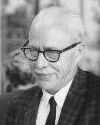 | Walter H. Brattain, born 10 Feb 1902, was an American scientist who won the Nobel Prize for Physics in 1956. Working with the of two other scientists ideas, Brattain’s hands built the first electronic replacement for the vacuum tube, the transistor. Can you name these two scientists who shared the Nobel Prize with Brattain? |
 | Ira Remsen, born 10 Feb 1846, was an American chemist who introduced advanced laboratory instruction using teaching methods he had learned in Germany under Fittig. Remsen specialized in the benzene ring and related groups. With a student working under his direction, in 1879, he first synthesized orthobenzoyl sulfimide, which the student accidentally discovered was intensely sweet. By what name is the sweetener now known? |
| Deaths | |
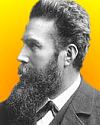 | Wilhelm Conrad Röntgen (1845-1923) was a German physicist discovered X rays, which heralded the age of modern physics and revolutionized diagnostic medicine. In 1901 he was the recipient of the first of a new annual prize. What was this prize? |
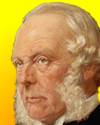 | An English surgeon (1827-1912) was a pioneer in preventive medicine and the use of antiseptics. His book, On the Antiseptic Principle in the Practice of Surgery (1867), was the first treatise on the subject. While at the Royal Infirmary, Glasgow, Scotland, he introduced the use of carbolic acid (phenol) as a disinfectant used on bandages, ligatures, utensils, as well as for direct use on wounds and washing surgeon’s hands. What is the name of this scientist? |
| Events | |
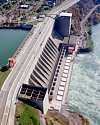 | On 10 Feb 1961, the largest (at the time) hydroelectric facility in the Western world was officially opened. The first generator, which had been producing current for some days before while undergoing tests, was officially placed in service to supply salable quantities of electricity. The size comparison was based on its designed 2,190 megawatt installed capacity when all 13 generators were brought online in 1963. Where was this hydroelectric project built? |
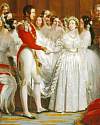 | On 10 Feb 1840, Queen Victoria married Prince Albert. She was the carrier of a gene for a health disorder which appeared among a number of their descendants. Their family tree provided a famous case history in genetics. Which health disorder was genetically transmitted in Queen Victoria's family tree? |
Fast answers for the previous newsletter for February 9: Zino's petrel • Rocky Mountain spotted fever • trials of the time-keeping accuracy of Harrison's marine chronometer • decade including the year 1870 • nitroglycerin.
 If you enjoy this newsletter, the website, or wish to offer encouragement or ideas, please send feedback by using your mail reader Reply button.
If you enjoy this newsletter, the website, or wish to offer encouragement or ideas, please send feedback by using your mail reader Reply button. Your click on a Facebook, StumbleUpon, or other social button on the site webpages is also a welcome sign of appreciation. Thank you for using them.
© This newsletter is copyright 2020 by todayinsci.com. Please respect the Webmaster's wishes and do not put copies online of the Newsletter — or any Today in Science History webpage. (If you already have done so, please remove them. Thank you.) Offline use in education is encouraged such as a printout on a bulletin board, or projected for classroom viewing. Online, descriptive links to our pages are welcomed, as these will provide a reader with the most recent revisions, additions and/or corrections of a webpage. For any other copyright questions, please contact the Webmaster by using your mail reader Reply button.
--
If you do not want to receive any more newsletters, Unsubscribe
To update your preferences and to unsubscribe visit this link
Executive Real Estate Business Class
-
"It was like a man with wings. It wasn't like anything you'd see on TV or in a monster movie." ...
About the publisher
Search This Blog
Blog Archive
-
▼
2021
(585)
-
▼
February
(72)
- Mary Seacole | The Spitfire | George Washington
- On This Day for February 28 - Olof Palme assassina...
- On This Day for February 27 - Chile struck by eart...
- On This Day for February 26 - Napoleon's escape fr...
- On This Day for February 25 - Ousting of Marcos in...
- Demystified: How Do Penguins Tell Each Other Apart?
- On This Day for February 24 - U.S. President Andre...
- On This Day for February 23 - Alamo besieged by Sa...
- On This Day for February 22 - Cloning of Dolly, Ge...
- Your essential guide to the Tudors | LGBT+ history...
- On This Day for February 21 - Malcolm X assassinat...
- On This Day in History by OnThisDay.com: You are n...
- February 21: The 1st Romanov Tsar, the 1st Locomot...
- On This Day for February 20 - John Glenn's orbit o...
- On This Day for February 19 - Iwo Jima invaded by ...
- 🎉 Ready for 30% Off Kids' Memberships?
- On This Day for February 18 - Pluto discovered by ...
- Newsletter for Thursday 18 February.
- Demystified: Why Does Salt Melt Ice?
- On This Day for February 17 - Vietnam invaded by C...
- Newsletter for Wednesday 17 February.
- On This Day for February 16 - Power in Cuba seized...
- Newsletter for Tuesday 16 February.
- On This Day for February 15 - USS Maine destroyed,...
- Newsletter for Monday 15 February.
- February 15: The King of Persia, the Human Genome ...
- Who was Saint Valentine?
- On This Day for February 14 - Fatwa issued against...
- Newsletter for Sunday 14 February.
- February 14: Battle of Cape St Vincent, the Teleph...
- On This Day for February 13 - William and Mary cro...
- Newsletter for Saturday 13 February.
- February 13: Baghdad falls to the Mongols, the Bil...
- On This Day for February 12 - Chile's independence...
- Newsletter for Friday 12 February.
- February 12: The Qing Dynasty Ends, The Senate Acq...
- Demystified: Why Do We Say “A Pair of Pants”?
- On This Day for February 11 - St. Bernadette's fir...
- Newsletter for Thursday 11 February.
- February 11: Margaret Thatcher's Rise to Power, Ne...
- Watch ‘Tuskegee Airmen: Legacy of Courage’
- 🇺🇸💰Your Presidents' Day Exclusive Bonus!
- On This Day for February 10 - Kasparov-versus-comp...
- Newsletter for Wednesday 10 February.
- February 10: End of the French-Indian War, HMS Dre...
- All-New Tonight: 'The Food That Built America' Sne...
- On This Day for February 9 - Calcutta restored to ...
- Newsletter for Tuesday 9 February.
- February 9: Massachusetts Rebels, the Battle of Gu...
- On This Day for February 8 - Mary, Queen of Scots,...
- Newsletter for Monday 8 February.
- February 8: Mary Stuart is Decapitated, Napoleon L...
- What did Mary Tudor think of Anne Boleyn and her o...
- On This Day for February 7 - British Invasion laun...
- Newsletter for Sunday 7 February.
- February 7: The 1st English Prince of Wales, the M...
- Newsletter for Saturday 6 February.
- On This Day for February 6 - Accession of Elizabet...
- February 6: Maximilian I and Elizabeth II Ascend t...
- Black History Month: The Tuskegee Airmen Documenta...
- On This Day for February 5 - Punic Wars ended, Han...
- February 5: Congo Taken as a Personal Possession a...
- On This Day for February 4 - Yalta Conference open...
- February 4: The Chinese Song Dynasty, World's Olde...
- Serving Up an All-New Season
- On This Day for February 3 - Fifteenth Amendment t...
- February 3: The Naval Battle of Diu, Universal Suf...
- On This Day for February 2 - Ban on African Nation...
- February 2: New Amsterdam Grows Up, the US Pays Me...
- On This Day for February 1 - Space shuttle Columbi...
- Newsletter for Monday 1 February.
- February 1: Black History Month Starts and a Day o...
-
▼
February
(72)
-
Blogroll
-
About
HistoryFact










0 comments:
Post a Comment